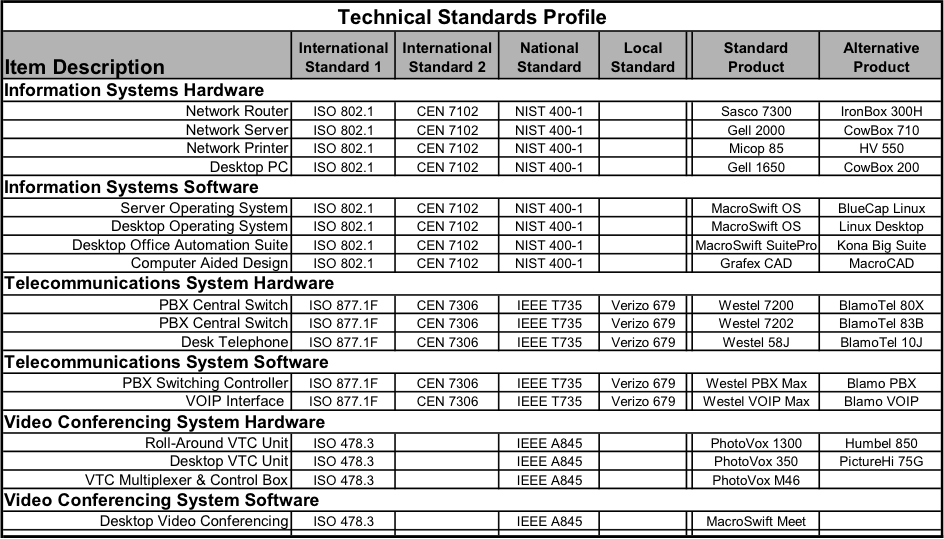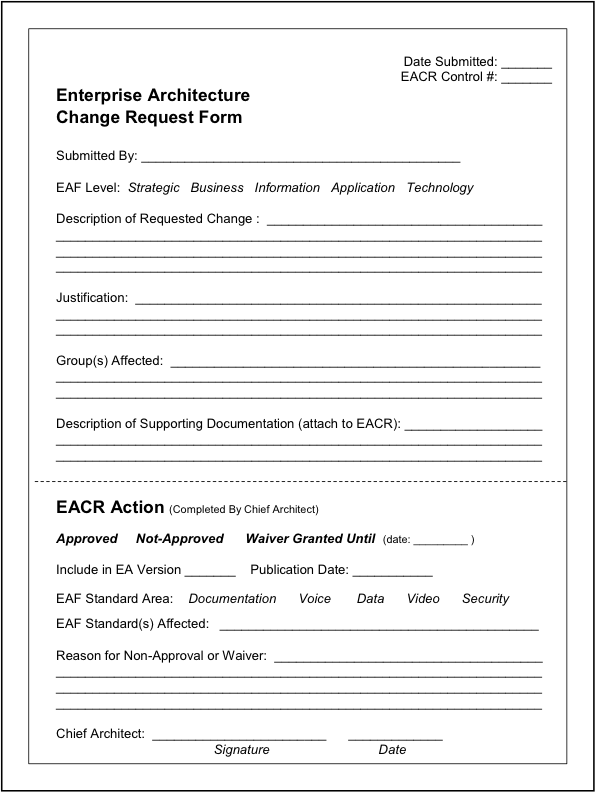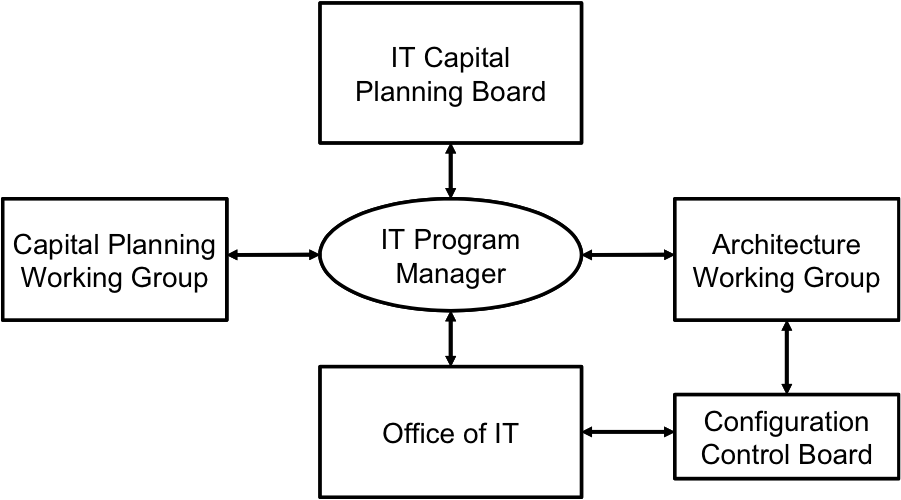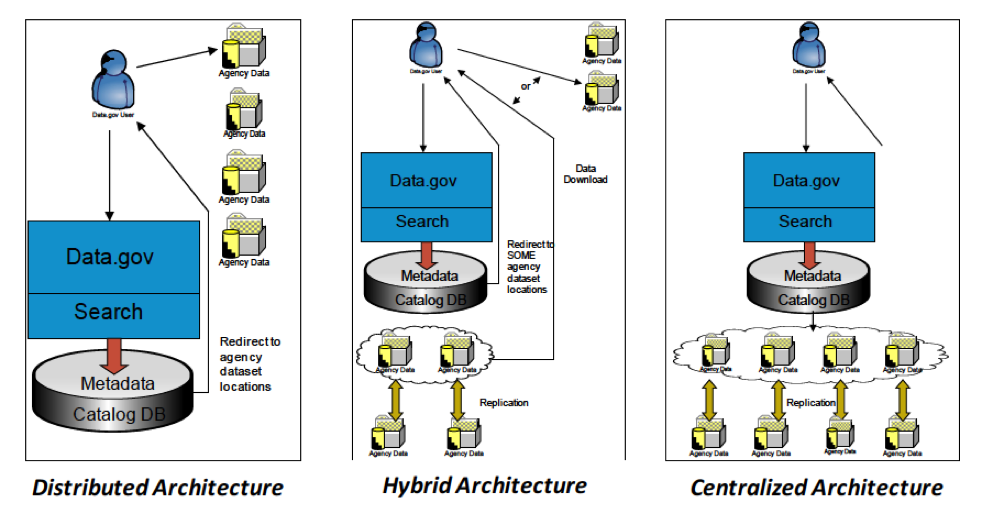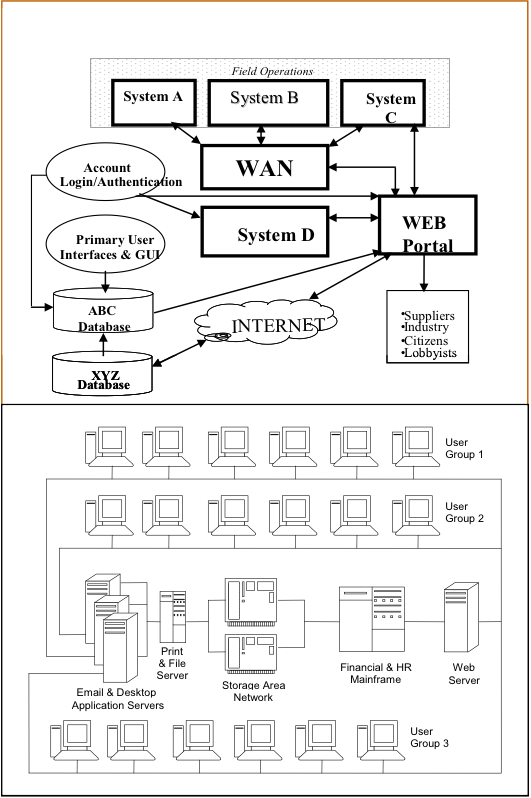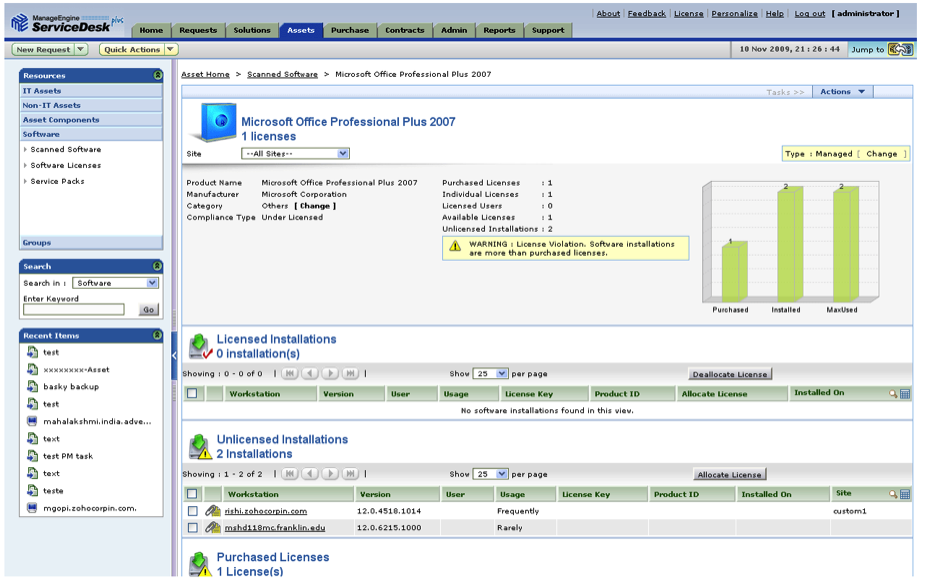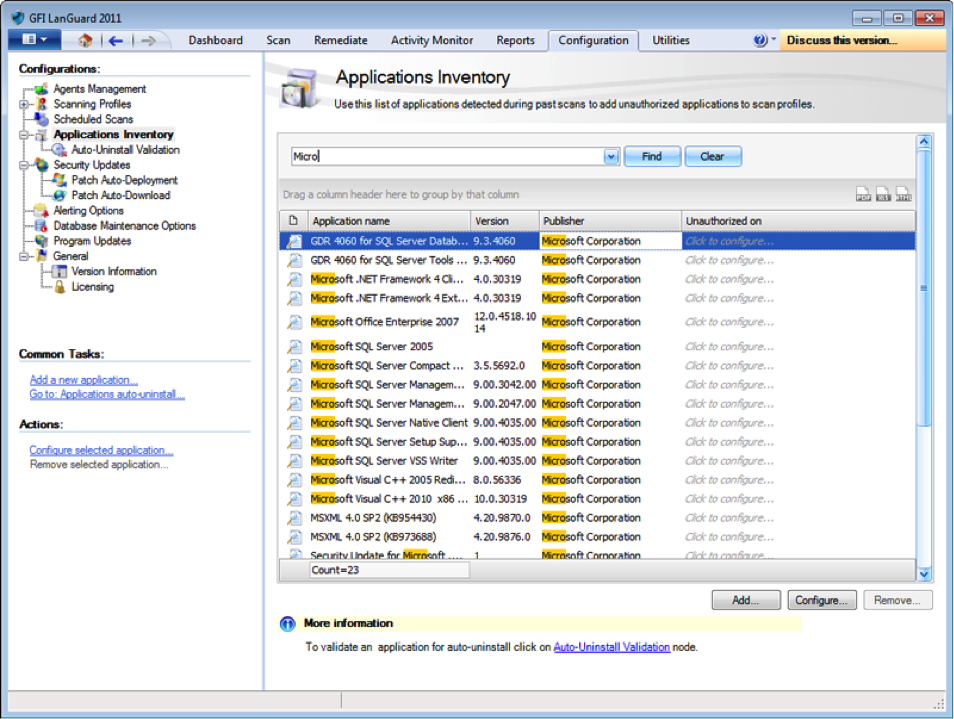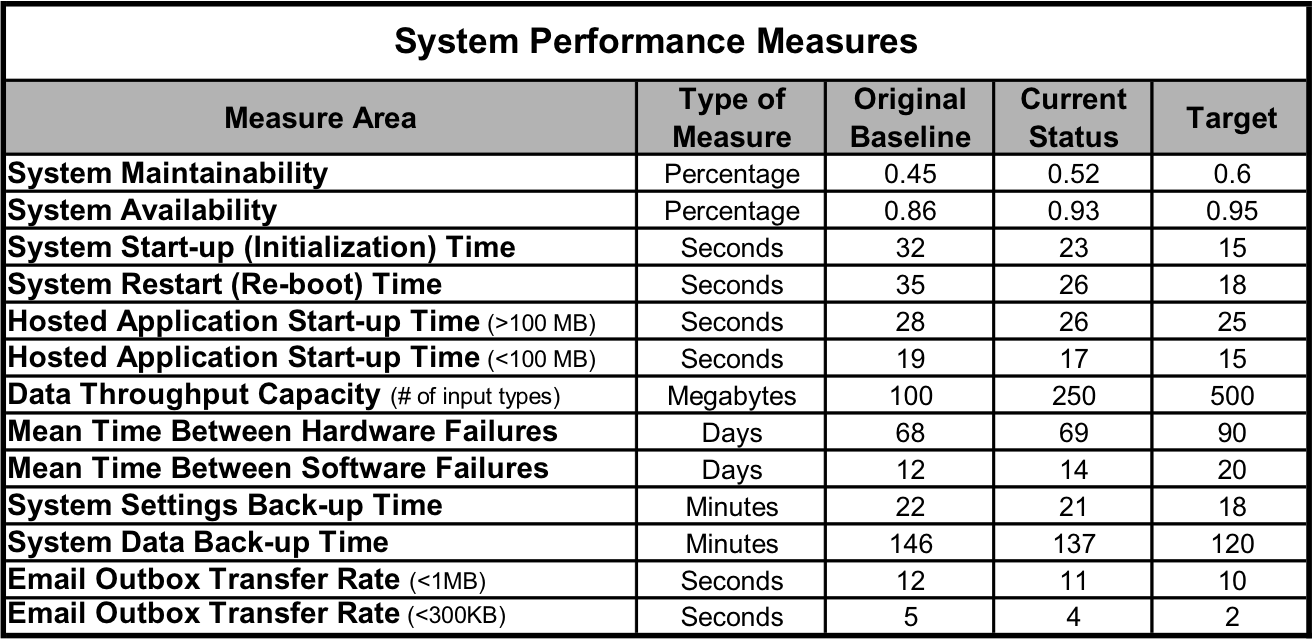 EA3 artifact I-4: Technology Forecast
EA3 artifact I-4: Technology Forecast
The Technology Forecast supports and relates to the I-3 Technology Standards Profile. The Technology Forecast documents expected changes in any of the standards listed in the I-3 artifact, where future changes appear to be happening or about to happen.
- Captures expected changes in technology related standards and conventions
- Identifies critical technology standards, their fragility, and impact of changes to the architecture
- Contains specific predictions about the availability of emerging standards, and relates to specific System/Application (SA) framework elements

